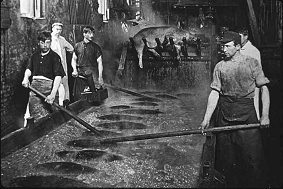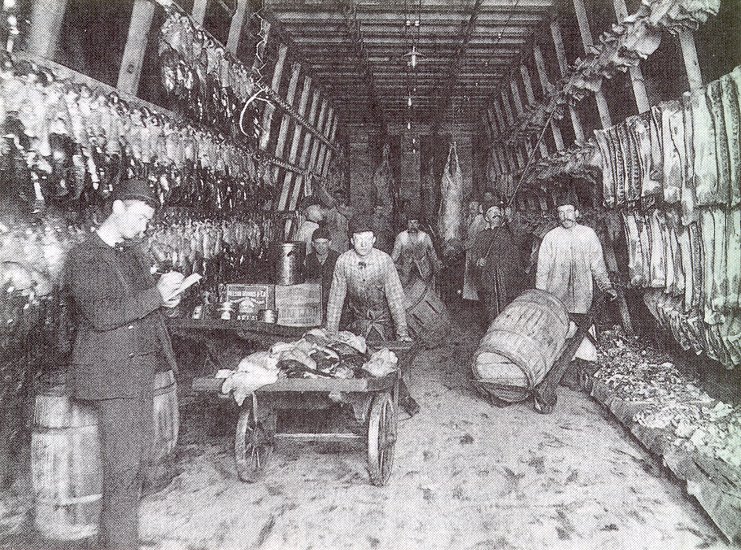

The Jungle and the Chicago Stockyards
Upton Sinclair's famed novel, The Jungle , had a profound effect on the huge business of the stockyards in Chicago . His novel was aimed at one of the most profitable industries in Chicago , the stockyards, which “employed 25,000 men, women, and children and each year slaughtered fourteen million animals.” (Larson, 20) The stockyards were a big business and “directly and indirectly nearly one-fifth of Chicago 's population depended on the yards for its economic survival.” (Larson, 20) He was motivated to write his novel by the 1904 Chicago stockyard strike, in which the Amalgamated Meat Cutters and Butcher Workmen (AMC) attempted to unionize. Employers hiring African Americans as strikebreakers during this time would have tremendous influence during the Race Riots of 1919.
The Jungle follows a Lithuanian immigrant, Jurgis Rudkus, who works in Packingtown. Sinclair tells of dead rats along with children's fingers and cow fetuses shoveled into sausage grinding machines, diseased cows slaughtered for beef, and filth and guts from the floor swept up and sold as ‘potted ham.' Though only eight pages actually describe the horrors of meat packing, the book had a tremendous and unprecedented social reaction. After reading an advanced copy, a sickened President Theodore Roosevelt urged Congress to pass a law establishing the Food and Drug Administration, which still exists today. This new establishment marked the first time there were federal standards for beef.
More than just describing the horrors of meat quality, Sinclair also told the heartbreaking story of foreign born ‘wage slaves' working 12 hour days, often without any breaks. After seeing how society was responding to his novel, many workers in the meat packing industry were influenced to strike and attempted to unionize. Sinclair's novel had a profound effect on Chicago , food standards in the United States , and helped set a precedent for author's making social statements with their works.